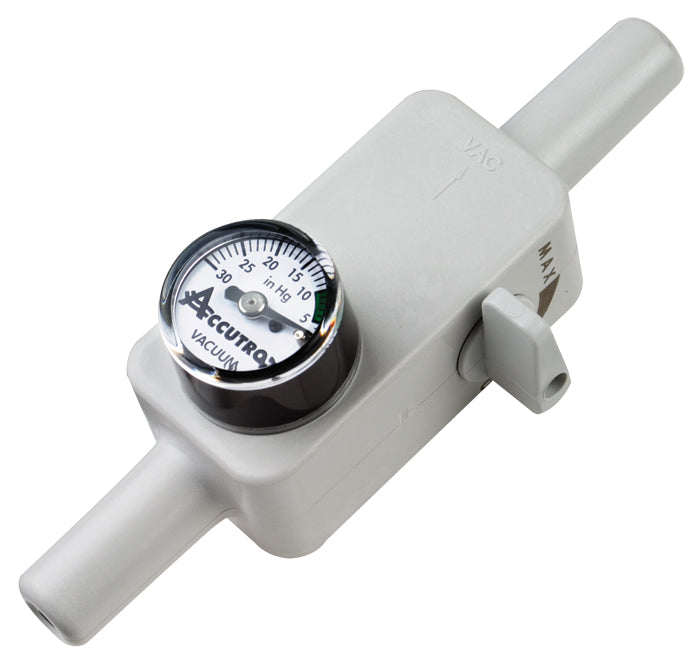It is important to get comfortable with using nitrous. Nitrous Oxide (N2O) can be a valuable addition to the dental office analgesia armamentarium. Having a relaxed patient leads to more successful outcomes.
Nitrous Scavenging Circuits
These systems deliver N2O to the patient via a nosepiece or “hood.” Various equipment manufacturers have their own designs of hoods designed to be used either with or without a “scavenger system” (#71-30 or #71-301).
How Does It Work?
A scavenger system evacuates exhaled gases to minimize the contamination of ambient air within the operatory. The scavenger connects to your vacuum system (via the HVE) to pull the gas away and vent it to the outside atmosphere (along with your main central vacuum vent).
To prevent the vacuum from pulling all of the gas before the patient can aspirate (and receive the benefits), all scavenging systems have a vacuum valve and gauge incorporated into the system. This valve controls the level of vacuum so excess gas safely escapes while the patient still receives an appropriate dose of N2O.
The gauge pictured below is typical of such devices. It has inlet and outlet connectors for the vacuum line, a control valve to adjust the flow, and a gauge to indicate the current flow setting. NOTE: The green “safe” area indicated on the face of the gauge. Most systems incorporate clear labeling like this to make it easy to set the gauge correctly.

PHOTO: Scavenging Circuit Vacuum Gauge (#71-28)
Scavenging Circuit Connections
The scavenger connects to a HVE valve. Scavenging circuits typically have a 7/16” o.d. fitting at the end of the unit. All HVE valves sold in the US take a standard 7/16” tip. This is also the size of the various aspirator tips on the market. These are standardized sizes.
The hood, however, varies considerably from manufacturer to manufacturer. Most hoods have two “inlet” connections for gas to flow to the patient’s nose from the flowmeter. If using a scavenger, there will also be one or more “outlet” hoses pulling the excess (and exhaled) gas away from the patient (and operatory). As an additional means of limiting flow (in addition to the vacuum valve and gauge already discussed) these “outlet” hoses are typically smaller in diameter than the “inlet” hoses.
As these hoses fit over connectors, they are measured by inside diameter (i.d.). Whenever you need to replace one of these hoses, always measure the inside diameter to be sure of the proper size. Unlike HVE tips, there can be some variance here so it’s important to know the size you have.
The Accutron scavenger circuit and hood has four connections. Belmed nitrous units use this system too. Circuit has two inlet hoses of 3/8” i.d. (connect to the side of the hood) and two outlet hoses of ¼” i.d. (connect to the scavenger “hub” to snap onto the front of the hood).
Why Do You Need One?
When you get comfortable with the use of nitrous oxide in your practice, patients have a choice. It can be an important tool to help patients have a relaxing experienceand enhance recall rates. As a result you will have more successful procedures. The scavenging circuit plays an important role in your anesthetic system, allowing you to safely deliver a controlled flow of nitrous oxide and oxygen to your patient, while keeping staff protected.



LEAVE A REPLY